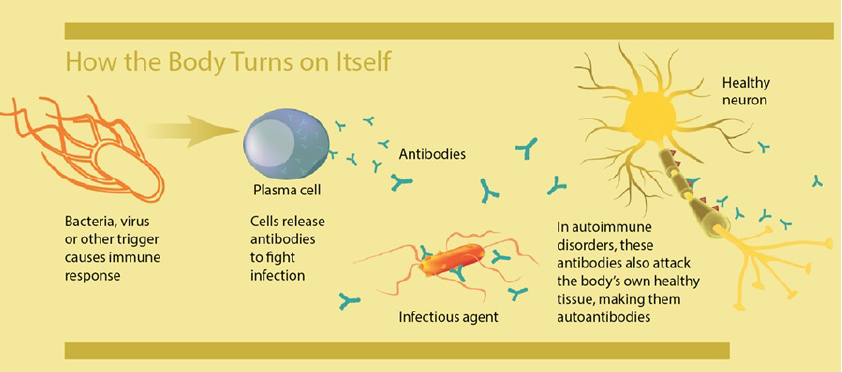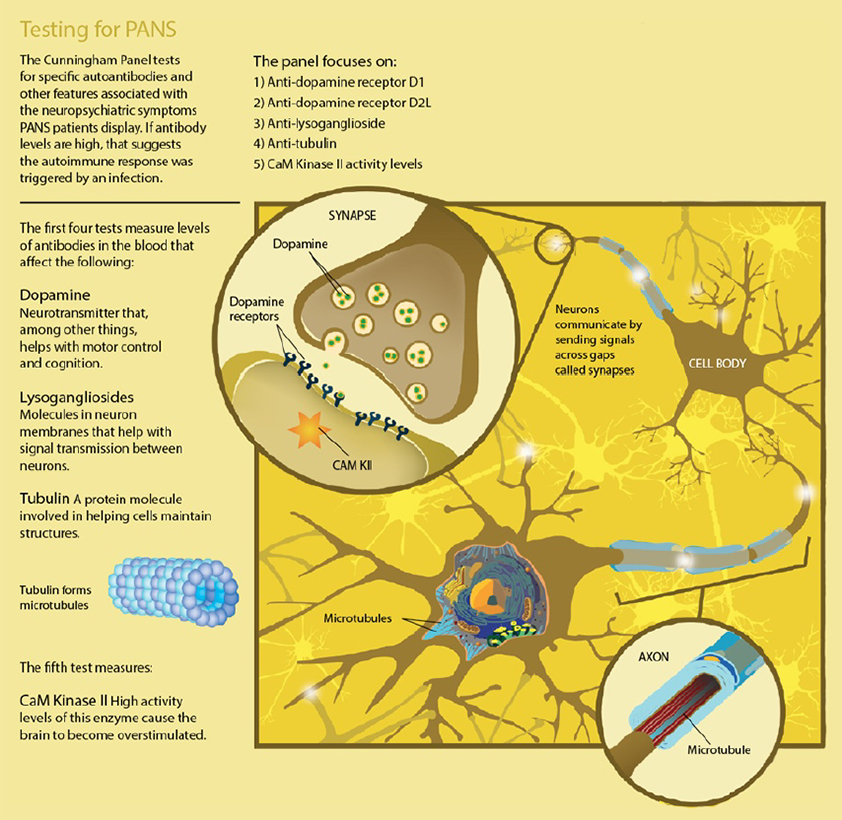
by Pamela Weintraub
The author takes an in-depth look at the history and scientific findings surrounding infection-triggered autoimmune neuropsychiatric disorders, PANS and PANDAS.
The article explores Dr. Madeleine Cunningham’s discovery of autoantibodies in the brain and their impact on movement and behaviors.
Article Excerpt: Peering Into the Brain
One promising tool is the “Cunningham Panel,” created by Cunningham through her commercial lab, Moleculera. Currently used for patients with neuropsychiatric symptoms, blood tests in the panel search for the autoantibodies Cunningham has found. The tests also look for whether the blood increases CaM kinase II activity.
The panel is so nuanced that it measures the level of autoantibodies against two types of dopamine receptors. Cunningham has come up with a formula based on the ratio of autoantibodies to the two dopamine receptors; depending on the balance between the two, she can predict a variety of symptoms, from ADD to compulsions to obsession to irritability and more. If a patient’s blood shows high levels of the markers, it indicates that neuropsychiatric symptoms could stem from autoantibodies created in the wake of infectious disease — and that the treatment of choice might be steroids or IVIG.

Source: Alison Mackey/Discover Magazine. Immune Response: DesignUSA/Shutterstock. Brain and microtubule: Alila Medical Media/Shutterstock. Silhouette: Eladora/Shutterstock. Neurons: adapted from Ladyofhats/Wikipedia

Source: Alison Mackey/Discover Magazine.





